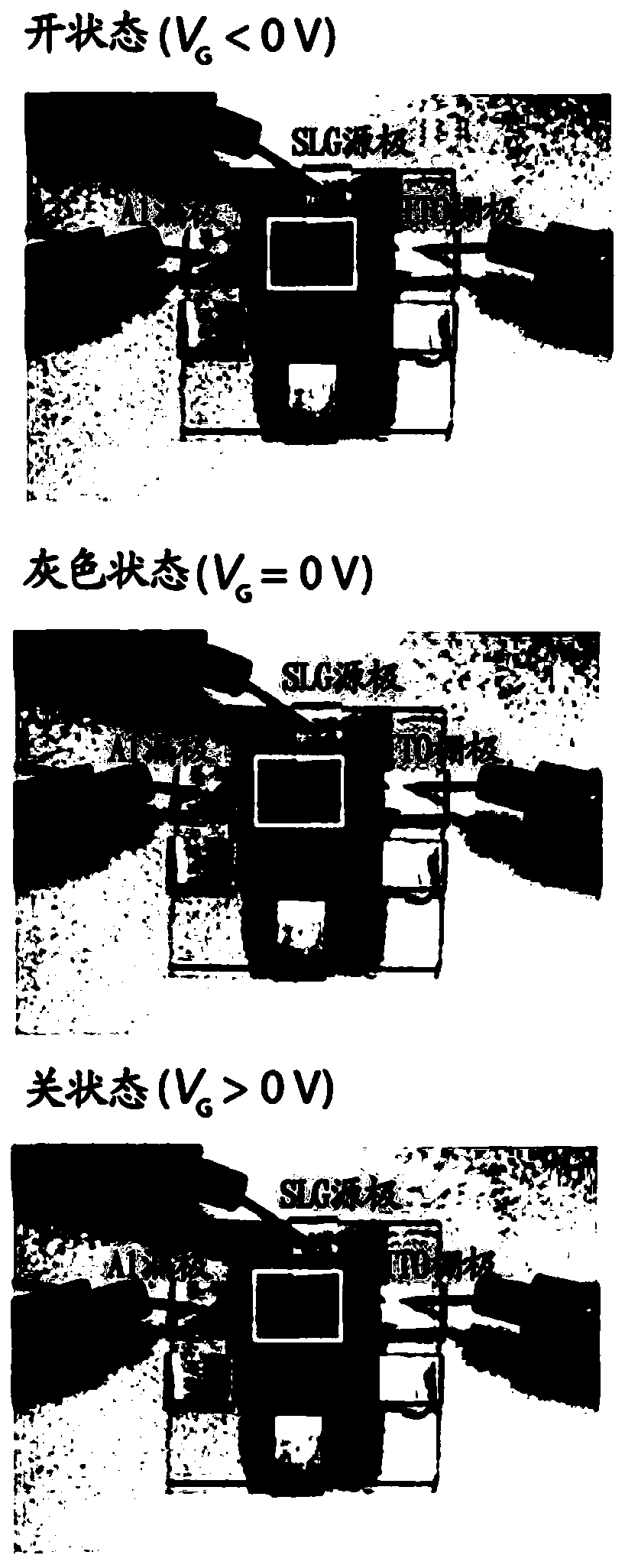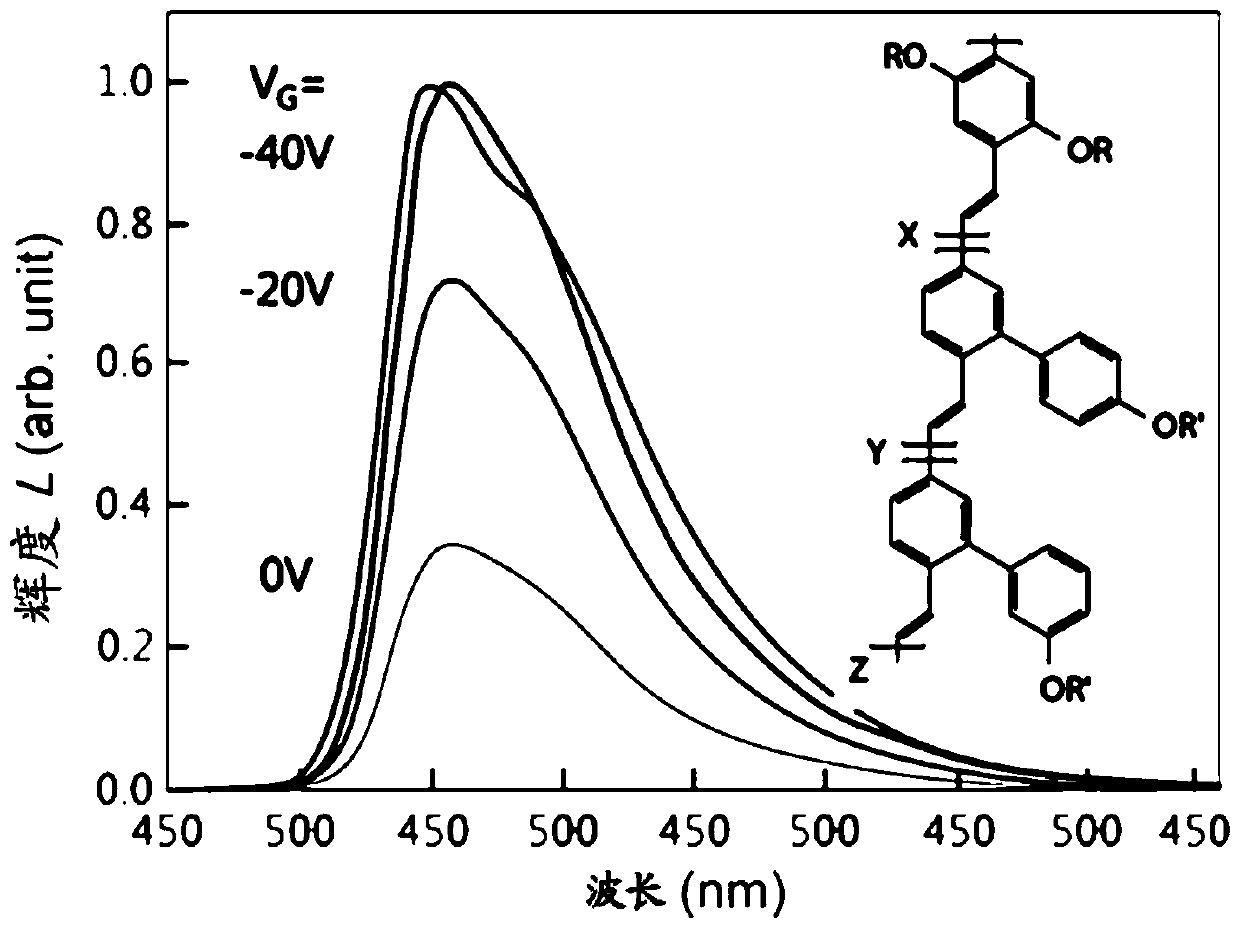Organic transistor element, organic light emitting transistor element, and manufacturing method thereof
A technology for a light-emitting transistor and a manufacturing method, which is applied in the manufacture of semiconductor/solid-state devices, transistors, electrical components, etc., can solve problems such as difficulty in reproducing production components, difficulty in making CNT mesh source electrodes, and insufficiency.
- Summary
- Abstract
- Description
- Claims
- Application Information
AI Technical Summary
Problems solved by technology
Method used
Image
Examples
experiment example 1
[0077] [Experimental example 1] Operation characteristics of Gr-VOLET
[0078] figure 1 is a diagram related to the structure of Gr-VOLETs, showing a bottom gate (Bottom-gate) including indium tin oxide (indium tin oxide, ITO), Al 2 o 3 Schematic structure of Gr-VOLET with gate dielectric layer, SLG source electrode, organic light-emitting channel layer, and Al metal drain electrode. By the action of Gr-VOLET, holes are injected from the SLG source to the light-emitting channel layer, and electrons are injected from the Al drain to the light-emitting channel layer. Through the action of Gr-VOLET, hole injection from the source of SLG can be performed by applying gate voltage, V GS (or V G ) for modulation, V G The application essentially affects the electroluminescence process that takes place in the channel layer.
[0079] figure 2 shown at a fixed source-drain voltage of -3.8V (V DS ) (or V SD =3.8V), at various V G EL light emission of the Gr-VOLET sample under a...
Embodiment 1
[0083] SLG with intrinsic characteristics cleaned by electron chemistry (hereinafter referred to as "SLG 1 ")
Embodiment 2
[0085] With ferric chloride (FeCl 3 ) p-type doped SLG (hereinafter referred to as "SLG 2 ")
PUM
| Property | Measurement | Unit |
|---|---|---|
| Current density | aaaaa | aaaaa |
| Roughness | aaaaa | aaaaa |
Abstract
Description
Claims
Application Information
 Login to View More
Login to View More - R&D
- Intellectual Property
- Life Sciences
- Materials
- Tech Scout
- Unparalleled Data Quality
- Higher Quality Content
- 60% Fewer Hallucinations
Browse by: Latest US Patents, China's latest patents, Technical Efficacy Thesaurus, Application Domain, Technology Topic, Popular Technical Reports.
© 2025 PatSnap. All rights reserved.Legal|Privacy policy|Modern Slavery Act Transparency Statement|Sitemap|About US| Contact US: help@patsnap.com



